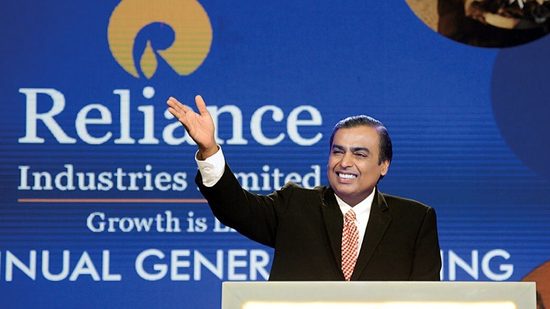In October, Russia No. 1 oil supplier for india. Russia overtook Saudi Arabia in terms of oil supplies, moving the Kingdom to third position. India’s major oil source was Iraq.
Ironically, Saudi Arabia’s downturn in India’s oil market coincided with Russia’s rise and took place as diplomatic connections between Riyadh and New Delhi were expanding.
Mohammed bin Salman Al Saud, the crown prince of Saudi Arabia, is in India this month to meet with Prime Minister Narendra Modi.
Indian refiners now rely almost exclusively on Russian oil, a development that took decades for US and West Asian sources.
As the US and Europe attempt to compel the rest of the world to toe their line by imposing price ceilings on Russian oil starting in December, the issue that remains is for how long.
For the first time, India purchased 34% more Russian oil by ship than the European Union did. In October, China continued to be the primary consumer of Russian seaborne oil, importing 1 million barrels daily.
Additionally, India reached a new high in October by purchasing fuel oil from Russia at a rate of almost 106,000 barrels per day.
Russian oil imports have dramatically increased since 2021, when they were less than 1%. The significant discounts that followed the February invasion of Ukraine were mostly to blame for this. Russian crude is being sold at a significantly reduced price as a result of Western sanctions.
The little increase in Russian crude deliveries in October highlights India’s resistance to US demands to halt Russian purchases. Additionally, Indian refiners increased their stock of Russian crude by blending 15% East Siberia Pacific Ocean mixes, 6% Arctic Oil, and 3% Novy Port into their overall supply mix of Russian crude that is dominated by the Urals.
According to London-based commodity intelligence service Vortexa, Russia provided 891,000 barrels per day of crude in October, accounting for a 20.5% share of India’s crude import market, up from 876,000 barrels per day in September.
Saudi Arabia’s daily shipments decreased by 16% last month, from 807,000 barrels in September to 706,000 barrels last month.
According to Serena Huang, an analyst at Vortexa located in Singapore, Saudi Arabia’s overall crude exports decreased by 700,000 barrels per day in October. She noted that this might have affected Indian volume.
With 948,000 barrels per day in October compared to 937,000 barrels per day in September, Iraq was the largest oil supplier to India, making up 22% of the country’s imports in that month.
Russian oil was purchased by India at a rate of 910,000 barrels per day in contrast to 809,000 barrels per day in September and 732,000 barrels per day in August, according to kPler, a commodity analytics company located in Paris. Iraq was the largest supplier last month, supplying 927,000 barrels per day, up from 806,000 barrels per day in September and 885,000 barrels per day in August. Saudi Arabia came in third place, supplying 621,000 barrels per day, down from 860,000 barrels per day in September and 776,000 barrels per day in August.
According to data from the Centre for Research on Energy and Clean Air as of October 24, ndia spent €509 million last month on Russian oil purchases. Compare that to Germany’s €854 million, China’s €3.2 billion, and Turkey’s €931 million.
Using a price of $112 per barrel, Russia became India’s largest supplier in September, supplying 1 million barrels per day to the country.
At a price of $133 per barrel, Saudi Arabia supplied 874,000 barrels daily. With 864,000 barrels of crude per day last month at an average price of $107 per barrel, Iraq finished in third.
Indian crude’s price per barrel was on average $91. Last month, India’s total crude purchases averaged $121 per barrel.
The data provided by organisations that track shipping movements differs from the data provided by Customs.
According to a representative of the sector, Indian refiners are increasing their imports of Urals grade oil in advance of a price ceiling that the US and Europe intend to impose on Russian oil starting in early December.
The biggest consumers of Russian oil, China, India, and Turkey, have not yet endorsed the proposal. After the Organisation of the Petroleum Exporting Countries which includes Russia, reduced output by 2 million barrels per day and precipitated a collapse in crude prices, it is uncertain whether the idea will move further.
According to London-based oil industry consultant Tilak Doshi, who was formerly with Saudi Aramco, “I think India will be able to continue importing Russian oil, and it will not be browbeaten by the Western alliance in its sovereign decisions to purchase oil from whatever source in its own national interest.”
According to Doshi, Russia is one of the top three oil producers in the world, and its oil is difficult to replace.
Similar to several West Asian grades, including the Arab medium, Russia’s medium sour Urals is suitable for Indian refiners when offered at a discount and supplied, but in the past, availability of the grade was a problem because Europe and China consumed the majority of Russian oil.
The administration has already defended India’s purchase of Russian oil on numerous occasions. Hardeep Puri, India’s energy minister, said on CNN on Monday, “What would happen to international pricing if India did not buy or someone else did not buy Russian oil, and Russian oil was to fall off the market? The market disruption might push prices to $200 per barrel.” He claimed that India will purchase oil and gas from anywhere it can since the country’s government has a “moral duty” to keep its populace supplied with energy.






